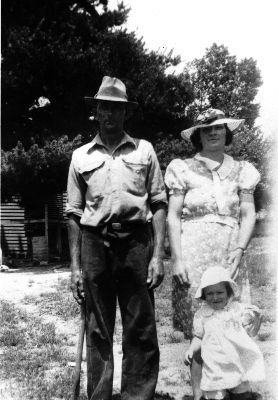Quilt No.757PHM - Powerhouse Museum
"The quilt was made by Catherine (Kit) Sarah Yates (nee Fenner) at 'Trida' near Armidale in the late 1930s.
Catherine was one of nine children. She was born in Sussex, England on 10 January 1913 and came to Australia with her family on the 'Benalla' in May 1925. Catherine worked as a house maid between 1927 and 1931, and was 18 when she married Ernest (Ern) John Yates (1906-1984) on 10 January 1931 at St. John's church at Uralla. They settled at Watsons Creek fourteen miles from Bendemeer on the New England tableland on a piece of ground called a 'miner's right'.
Ern and Kit made their family home on 'Kareela', a sheep station, 17 miles from Armidale on the Bundarra Road. They had four children: Dorothy, born in 1935; Kenneth, born 1938 and died of measles in 1939; Mary, born 1940; and John, born 1943. The family moved to Armidale in 1947 to give the children a better schooling and greater opportunities. Catherine had a stroke in 1964 and died aged 49. Ern worked on the land all his life. He trained his own sheep dogs, broke in and shoed horses, was a good gardener and a great family man who helped in the house, cooked and unpicked clothing for the eiderdowns.
"After Kit Yates' death the quilt was passed on to her daughter Dorothy Stevenson of Armidale. Dorothy gave the quilt to the Powerhouse Museum in 1985." [PHM]
"In August 1984, Dorothy Stevenson wrote: 'The eiderdowns I think were agin to the 'Wagga'. The covers were made of cretonne. The lining was a sheet or calico. Onto this any clean old woollen rag was stitched in layers, to make it thick and warm. The three I remember were for the big oak cot in my parents' room. The cretonne was in different shades of pink, blue flowers, and a very bright green. Then the two eiderdowns my sister and I had. These were quilted with quite big stitches, so were easy to undo to wash.' "
"In May 1985 she wrote: 'My Mother cooked, sewed, made jam, darned the winter clothing. She loved children. Her family was her life. She moved many times in the early years of her marriage. Often to very poor housing but it was always turned into a home. Nothing was ever thrown out, she had a use for everything. She taught her children to fend for themselves. Her son learnt to knit, sew and cook just the same as the girls. She made her own clothes. At this she was self taught. She nursed her father in the last months of his life (1955). She often sang and whistled as she did the daily jobs and always trapped rabbits when she lived in the bush. And always had a flower and vegetable garden.
"Kit had seven brothers and one sister who was the youngest. Kit was the middle one. Kit my mother lived life to the full. She knew how to laugh, how to love and how to cry. St Peters cathedral Armidale was full of mourners for her funeral. She was well loved.' " [PHM]

Related Quilts:
1960 x 1950mm
1601 x 915mm
2500 x 2000mm.






